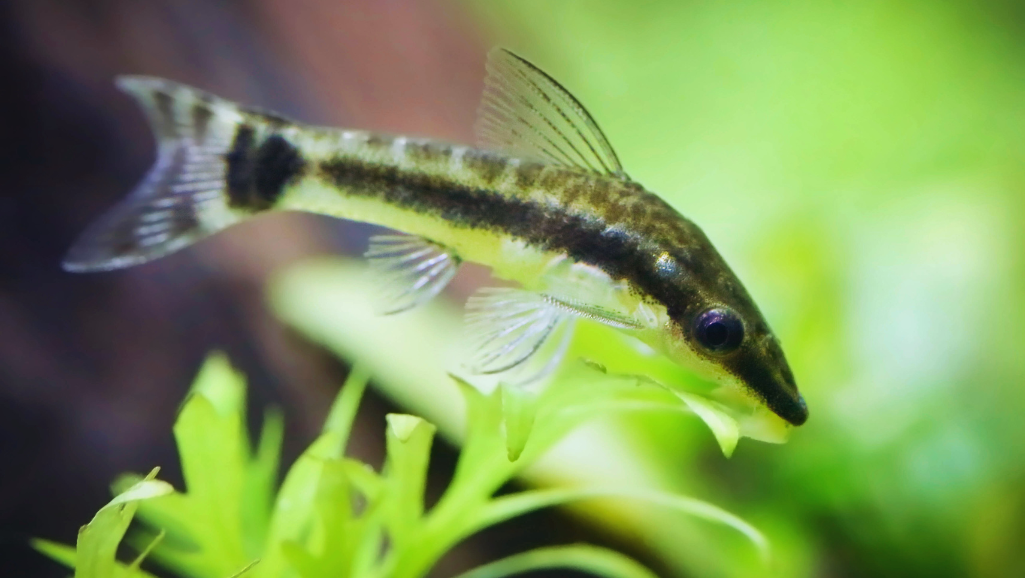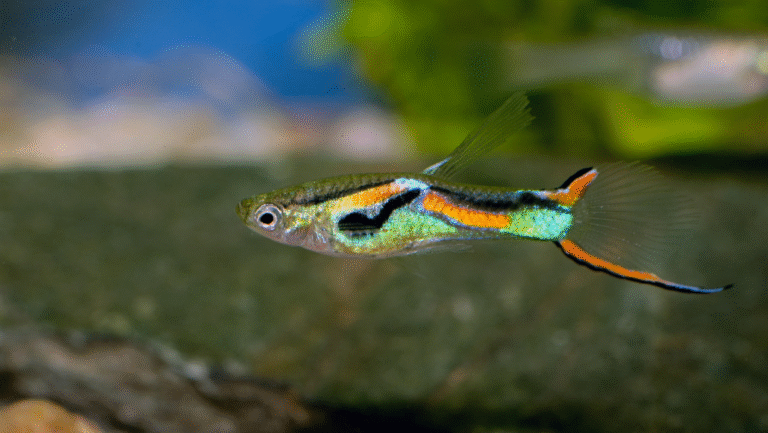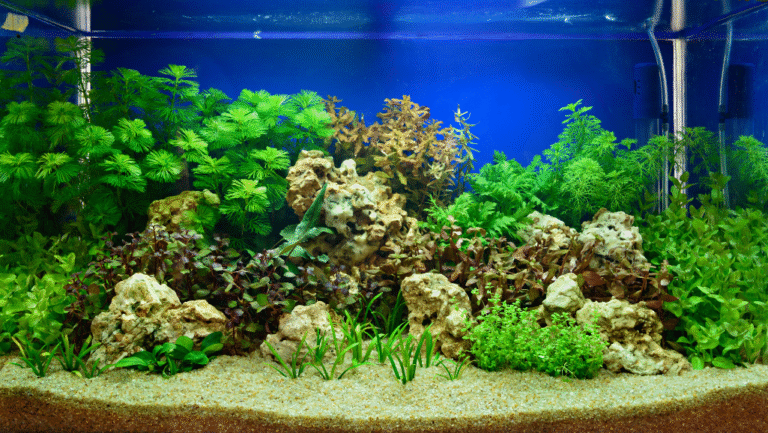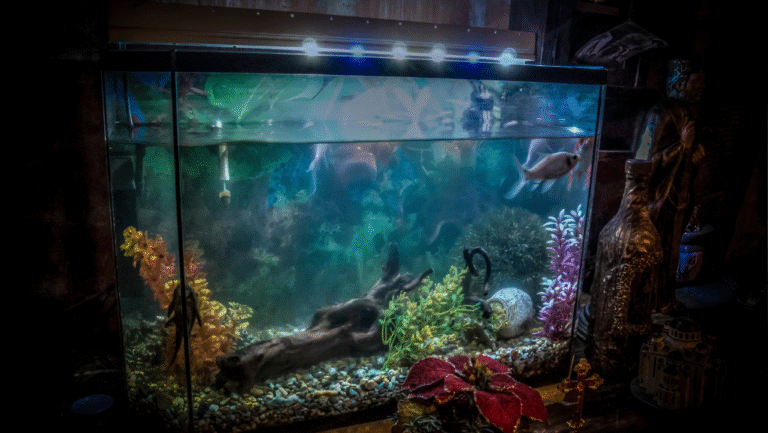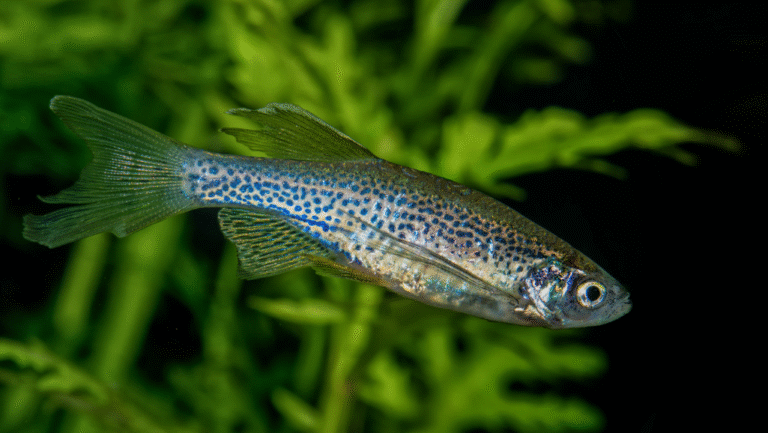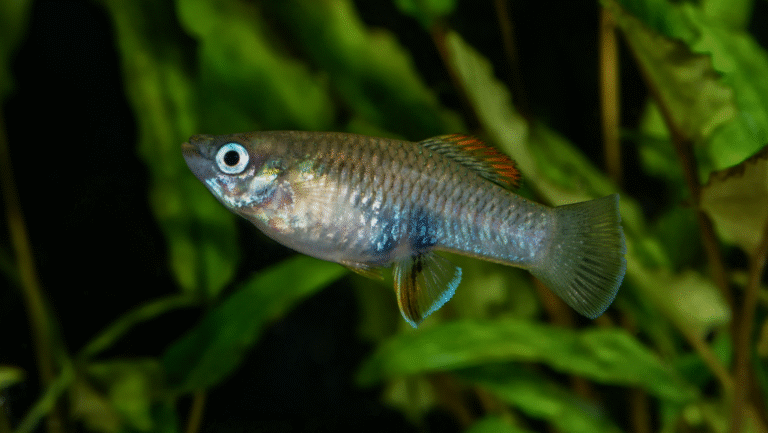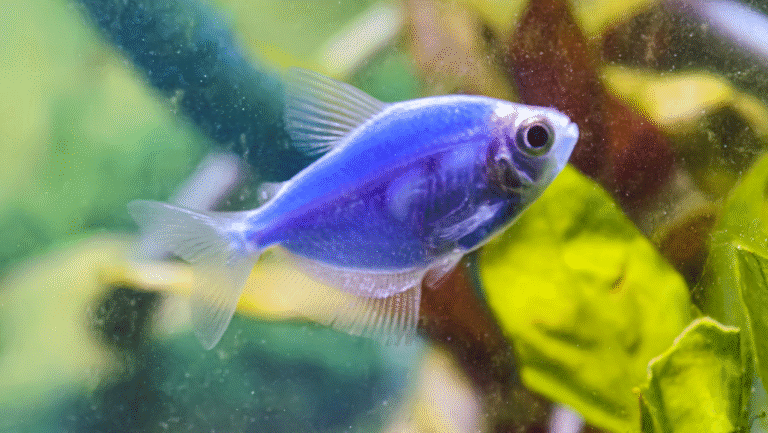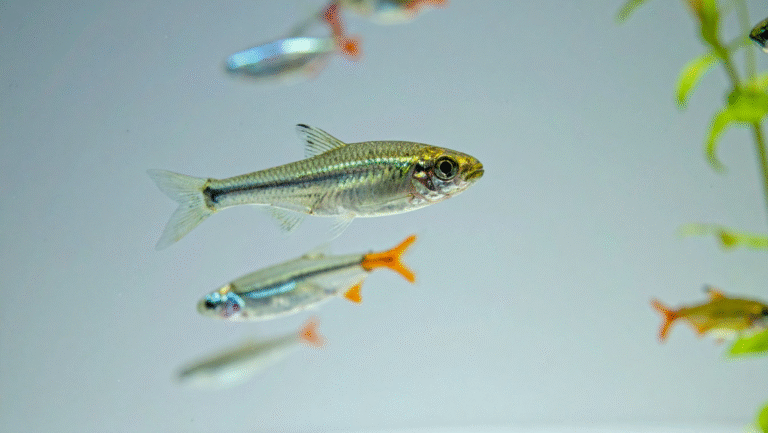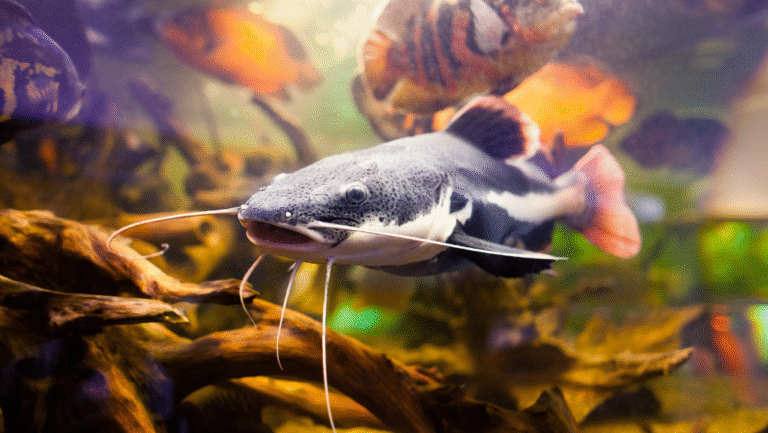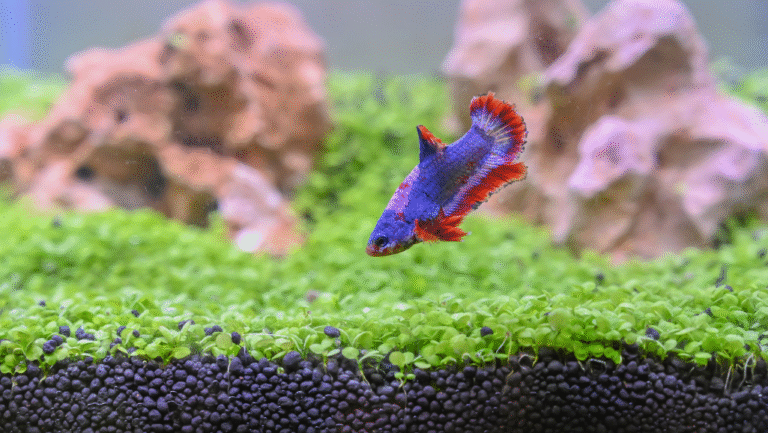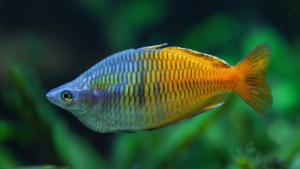Dwarf Otocinclus, or Otos, are small catfish from South America. They are popular in freshwater aquariums. These tiny fish, about 1.5-2 inches long, are known for being peaceful and great at cleaning algae. Otocinclus vittatus are active during the day, eating soft green algae and brown diatoms on plants and tank walls.
These fish do well in established tanks with lots of algae. They like water between 72-79°F and a pH of 6.8-7.5. Otos get along well with calm tank mates like Cory Catfish and freshwater shrimp.
Dwarf Otocinclus are great at eating algae but are delicate. They often arrive at pet stores hungry, having not eaten for 3-6 weeks. It’s important to keep their tank clean and stable with good filtration and regular water changes.
Key Takeaways
- Dwarf Otocinclus are small, peaceful algae eaters ideal for freshwater aquariums.
- They measure 1.5-2 inches and thrive in temperatures between 72-79°F.
- Otos prefer well-established tanks with ample algae growth.
- They are best kept with non-aggressive tank mates.
- Proper care includes stable water conditions and regular maintenance.
Introduction to Dwarf Otocinclus
Dwarf Otocinclus, also known as Dwarf Oto or Dwarf Suckermouth Catfish, are small but mighty in the aquarium world. They come from South America and are loved for their skill in eating algae.
What are Dwarf Otocinclus?
Dwarf Otocinclus are small catfish with up to 17 different species. The most common ones in aquariums are O. macrospilus, O. vittatus, and O. cocama. They are great at cleaning tanks by eating algae and waste.
Physical Characteristics and Size
Dwarf Otocinclus grow to 3-4 cm (1.18-1.57 inches) in aquariums. They have a dark line on their body and a light belly. Males are smaller and slimmer than females.
Natural Habitat and Origin
These tiny catfish come from South American rivers with murky, tannin-rich waters. They like temperatures between 21-26°C (69.8-78.8°F) and pH levels from 6.0 to 7.5. They hide under submerged wood, eating biofilm and aufwuchs.
| Characteristic | Detail |
|---|---|
| Lifespan | 3-5 years |
| Ideal Tank Size | 15 gallons for 5-6 fish |
| Water Hardness | 4-16°N (71.43-285.71ppm) |
Benefits of Keeping Dwarf Otocinclus in Your Aquarium
Dwarf Otocinclus catfish are tiny but mighty in controlling algae in aquariums. These nano fish are great for keeping tanks clean. They are only 1.5-2 inches long, making them perfect for small tanks.
As part of your tank’s cleanup team, Otocinclus are experts at eating soft green algae and brown diatoms. Their constant eating keeps your tank clean and adds movement to your aquarium.
These peaceful fish get along well with others. They are friendly with tetras, rasboras, and even dwarf shrimp. This makes them great for community tanks.
Otocinclus love planted tanks with fine-leaved plants and clean branches. They prefer water between 70-79°F and can handle various pH levels from 6.0 to 7.5.
| Benefit | Description |
|---|---|
| Algae Control | Excellent at eating soft green algae and brown diatoms |
| Size | Perfect for nano tanks at 1.5-2 inches long |
| Compatibility | Peaceful with most community fish and invertebrates |
| Tank Activity | Constant grazing adds interest to the aquarium |
By choosing Dwarf Otocinclus, you’re not just getting an efficient aquarium cleanup crew. You’re also adding fascinating, low-maintenance fish. They help create a healthier, more balanced aquatic ecosystem.
Ideal Tank Conditions for Dwarf Otocinclus
Creating the perfect environment for Dwarf Otocinclus in your freshwater aquarium is key. These tiny algae eaters need specific conditions to thrive. These conditions should mimic their natural habitat.
Tank Size Requirements
Dwarf Otocinclus are social and like to be in groups. A 20-gallon tank is great for 10-15 of these small catfish. Some people say to have one Otocinclus per 10 gallons of water.
Water Parameters
Stable water conditions are crucial for Otocinclus health. They like a pH of 6.0-7.5 and temperatures between 72-82°F (22-28°C). Nitrate levels should be between 0-20ppm for the best water quality.
Substrate and Decor Preferences
For a great aquarium setup, add slow-growing plants like Anubias, Java Fern, and Cryptocorynes. These plants offer grazing surfaces and hiding spots. Driftwood and smooth rocks can also be added to mimic their natural environment and provide more algae surfaces.
| Item | Purpose |
|---|---|
| Slow-growing plants | Grazing surfaces, hiding spots |
| Driftwood | Natural habitat simulation, algae growth |
| Smooth rocks | Additional surfaces for algae |
Remember, a well-established tank with some algae is vital for these tiny cleaners. The right conditions will help your Dwarf Otocinclus thrive in their new home.
Dwarf Otocinclus Diet and Feeding Habits
Dwarf Otocinclus, known as excellent Algae Eaters, have unique dietary needs. These needs are key to their health and longevity in aquariums.
Natural Diet in the Wild
In their native South American habitats, Dwarf Otocinclus are Aufwuchs Grazers. They mainly eat biofilm, including soft green algae and brown diatoms. Their specialized feeding makes them efficient cleaners in aquatic environments.
Recommended Foods in Captivity
To mimic their natural diet, offer Dwarf Otocinclus a variety of foods:
- Algae wafers
- Blanched vegetables (zucchini, spinach, lettuce)
- Specialized gel foods
- Soft algae growing in the tank
Feeding Frequency and Amount
Feed Dwarf Otocinclus small amounts often. This feeding strategy aligns with their grazing behavior in the wild. A well-fed Otocinclus should have a round, pearly abdomen.
| Feeding Schedule | Food Type | Amount |
|---|---|---|
| Daily | Algae wafers | 1 small wafer per 2-3 fish |
| 2-3 times a week | Blanched vegetables | Small piece, remove after 24 hours |
| Weekly | High-protein supplement | Tiny portion of baby brine shrimp |
Remember, overfeeding can lead to water quality issues. Monitor your Otocinclus closely and adjust feeding as needed. This will help keep them healthy and your tank clean.
Compatibility with Other Fish Species
Dwarf Otocinclus, tiny algae eaters, are perfect for creating a peaceful community tank. They are just 1.5-2 inches long. These gentle creatures are great friends for many aquarium setups.
In a well-planned community tank, Dwarf Otocinclus live well with small, peaceful fish. Tetras, rasboras, and corydoras are good friends. They also get along with kuhli loaches, snails, and dwarf shrimp. This mix makes a lively and balanced underwater world.
When picking tank mates, avoid big or aggressive fish. They might bully or compete with the Otos for food. Cichlids, bettas, barbs, and large gouramis should stay away. Instead, choose peaceful fish for a calm environment.
To make them happy, keep Dwarf Otocinclus in groups of three to six. This helps them feel safe and encourages natural behavior. A well-planned tank with the right species makes a happy home for all.
